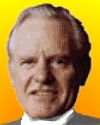
Born 9 Dec 1926; died 15 Feb 1999 at age 72.
American nuclear physicist who shared the 1990 Nobel Prize for Physics with Jerome Isaac Friedman and Richard E. Taylor for obtaining experimental evidence for the existence of the subatomic particles known as quarks. To study the internal structure of the proton, they worked with the 3-km linear accelerator recently opened at Stanford (SLAC). Electrons were accelerated to an energy of 20,000 million electronvolts and directed against a target of liquid hydrogen. In 1969 Kendall helped found the Union of Concerned Scientists. In 1997, in connection with the Kyoto Climate Summit, he helped produce a statement signed by 2,000 scientists calling for action on global warming.
American nuclear physicist who shared the 1990 Nobel Prize for Physics with Jerome Isaac Friedman and Richard E. Taylor for obtaining experimental evidence for the existence of the subatomic particles known as quarks. To study the internal structure of the proton, they worked with the 3-km linear accelerator recently opened at Stanford (SLAC). Electrons were accelerated to an energy of 20,000 million electronvolts and directed against a target of liquid hydrogen. In 1969 Kendall helped found the Union of Concerned Scientists. In 1997, in connection with the Kyoto Climate Summit, he helped produce a statement signed by 2,000 scientists calling for action on global warming.
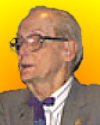
Born 9 Dec 1919; died 14 Apr 2011 at age 91.
William Nunn Lipscomb was an American physical chemist who won the Nobel Prize for Chemistry in 1976 for his research on the structure of boranes (boron hydride compounds), work which also answered general questions about chemical bonding. Boranes became important in chemical research in the 1940s and ‘50s because of the need to find volatile uranium compounds (borohydrides) for isotope separation, as well as the need to develop high-energy fuels for rockets and jet aircraft. To map the molecular structures of boranes, Lipscomb also developed x-ray techniques that later found application in many other areas of chemical research. Lipscomb's research interests included the relationship of three-dimensional structure and mechanisms of enzymes and other proteins.
William Nunn Lipscomb was an American physical chemist who won the Nobel Prize for Chemistry in 1976 for his research on the structure of boranes (boron hydride compounds), work which also answered general questions about chemical bonding. Boranes became important in chemical research in the 1940s and ‘50s because of the need to find volatile uranium compounds (borohydrides) for isotope separation, as well as the need to develop high-energy fuels for rockets and jet aircraft. To map the molecular structures of boranes, Lipscomb also developed x-ray techniques that later found application in many other areas of chemical research. Lipscomb's research interests included the relationship of three-dimensional structure and mechanisms of enzymes and other proteins.
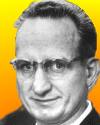
Born 9 Dec 1917; died 31 May 1986 at age 68.
(Leo) James Rainwater was an American physicist who won a share of the Nobel Prize for Physics in 1975 for his part in determining the asymmetrical shapes of certain atomic nuclei. During WW II, Rainwater worked on the Manhattan Project to develop the atomic bomb. In 1949 he began formulating a theory that not all atomic nuclei are spherical, as was then generally believed. The theory was tested experimentally and confirmed by Danish physicists Aage N. Bohr and Ben R. Mottelson. For their work the three scientists were awarded jointly the 1975 Nobel Prize for Physics. He also conducted valuable research on X rays and took part in Atomic Energy Commission and naval research projects.
(Leo) James Rainwater was an American physicist who won a share of the Nobel Prize for Physics in 1975 for his part in determining the asymmetrical shapes of certain atomic nuclei. During WW II, Rainwater worked on the Manhattan Project to develop the atomic bomb. In 1949 he began formulating a theory that not all atomic nuclei are spherical, as was then generally believed. The theory was tested experimentally and confirmed by Danish physicists Aage N. Bohr and Ben R. Mottelson. For their work the three scientists were awarded jointly the 1975 Nobel Prize for Physics. He also conducted valuable research on X rays and took part in Atomic Energy Commission and naval research projects.
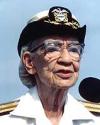
Born 9 Dec 1906; died 1 Jan 1992 at age 85. quotes
Grace Murray Hopper (née Grace Brewster Murray) was an American mathematician and rear admiral in the U.S. Navy. She pioneered the development of computer technology. She helped John Presper Eckert and John William Mauchly in designing and developing the BINAC (Binary Automatic Computer). Her ideas contributed to the first commercial electronic computer, Univac I, and naval applications for COBOL (co-mmon b-usiness o- riented l-anguage). With a Ph.D. in Mathematics from Yale University (1934), she taught mathematics (Vassar, 1931-43), before she joined the Naval Reserve. In 1944, she was commissioned as a Lieutenant (Junior Grade), assigned to the Bureau of Ordnance where she became involved in the early development of the electronic computer. For more than four decades, she was a leader in computer applications and programming languages.
Grace Murray Hopper (née Grace Brewster Murray) was an American mathematician and rear admiral in the U.S. Navy. She pioneered the development of computer technology. She helped John Presper Eckert and John William Mauchly in designing and developing the BINAC (Binary Automatic Computer). Her ideas contributed to the first commercial electronic computer, Univac I, and naval applications for COBOL (co-mmon b-usiness o- riented l-anguage). With a Ph.D. in Mathematics from Yale University (1934), she taught mathematics (Vassar, 1931-43), before she joined the Naval Reserve. In 1944, she was commissioned as a Lieutenant (Junior Grade), assigned to the Bureau of Ordnance where she became involved in the early development of the electronic computer. For more than four decades, she was a leader in computer applications and programming languages.
Grace Hopper: Admiral Of The Cyber Sea, by Kathleen Broome Williams. - book suggestion.
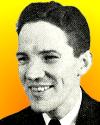
Born 9 Dec 1902; died 1996.
American biochemist who demonstrated that a chemical distinction exists between tumorous and normal cells. He was a protozoologist for a number of years in his early career. His study of tetrahymena, a one-cell, pond ciliate with a basic biochemical pattern in most respects resembling that of human cells, led to his discoveries in abnormal growths and, ultimately, in cancerous cells. In spring of 1949, Kidder and his associates discovered that azaguanine, a metabolic analog of guanine, would inhibit the growth of certain forms of cancer and leukemia in mice without injuring the normal cells of the host. (Subsequently, other researchers found to be unsuccessful in cancer treatment of humans, even toxic.)
American biochemist who demonstrated that a chemical distinction exists between tumorous and normal cells. He was a protozoologist for a number of years in his early career. His study of tetrahymena, a one-cell, pond ciliate with a basic biochemical pattern in most respects resembling that of human cells, led to his discoveries in abnormal growths and, ultimately, in cancerous cells. In spring of 1949, Kidder and his associates discovered that azaguanine, a metabolic analog of guanine, would inhibit the growth of certain forms of cancer and leukemia in mice without injuring the normal cells of the host. (Subsequently, other researchers found to be unsuccessful in cancer treatment of humans, even toxic.)
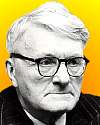
Born 9 Dec 1900; died 24 Mar 1995 at age 94. quotes
(Noël) Joseph (Terence Montgomery) Needham was an English biochemist, embryologist, and historian of science who wrote and edited the landmark history Science and Civilisation in China, a remarkable multivolume study of nearly every branch of Chinese medicine, science, and technology over some 25 centuries. As head of the British Scientific Mission in China (1942-46) he worked to assure adequate liaison between Chinese scientists and technologists and their colleagues in the West. As an historian of science and technology he wanted to break through the parochial, Europe-centred views of most of his colleagues by disclosing the achievements of traditional China and the contributions made by China leading up to the scientific revolution.
(Noël) Joseph (Terence Montgomery) Needham was an English biochemist, embryologist, and historian of science who wrote and edited the landmark history Science and Civilisation in China, a remarkable multivolume study of nearly every branch of Chinese medicine, science, and technology over some 25 centuries. As head of the British Scientific Mission in China (1942-46) he worked to assure adequate liaison between Chinese scientists and technologists and their colleagues in the West. As an historian of science and technology he wanted to break through the parochial, Europe-centred views of most of his colleagues by disclosing the achievements of traditional China and the contributions made by China leading up to the scientific revolution.
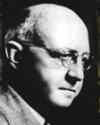
Born 9 Dec 1886; died 7 Oct 1956 at age 69.
American naturalist and inventor of the deep freezing food method and co-founder of General Foods Corp. On Arctic trips as a field naturalist for the United States government, he noticed that freshly caught fish, when placed onto the Arctic ice and exposed to the icy wind and frigid temperatures, froze solid almost immediately. He learned, too, that the fish, when thawed and eaten, still had all its fresh characteristics. He concluded that quickly freezing certain items kept large crystals from forming, preventing damage to their cellular structure. In Sep 1922, Clarence organized his own company, Birdseye Seafoods, Inc., New York City, where he began processing chilled fish fillets. In 1924, he developed an entirely new type of process to freeze dressed fish packed in cartons. more
American naturalist and inventor of the deep freezing food method and co-founder of General Foods Corp. On Arctic trips as a field naturalist for the United States government, he noticed that freshly caught fish, when placed onto the Arctic ice and exposed to the icy wind and frigid temperatures, froze solid almost immediately. He learned, too, that the fish, when thawed and eaten, still had all its fresh characteristics. He concluded that quickly freezing certain items kept large crystals from forming, preventing damage to their cellular structure. In Sep 1922, Clarence organized his own company, Birdseye Seafoods, Inc., New York City, where he began processing chilled fish fillets. In 1924, he developed an entirely new type of process to freeze dressed fish packed in cartons. more
Birdseye: The Adventures of a Curious Man, by Mark Kurlansky. - book suggestion.
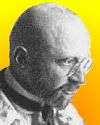
Born 9 Dec 1868; died 29 Jan 1934 at age 65. quotes
German physical chemist, winner of the Nobel Prize for Chemistry (1918) for his development of a method of synthesizing ammonia (1909) directly from nitrogen and hydrogen. This led to commercial large-scale production of nitrogen fertilizer. With the expertise of Carl Bosch, a chemist working at the Badische Anilin- und Soda- Fabrik (BASF), obstacles which hindered the large-scale adoption of the process were overcome and the Haber-Bosch process was born. The Haber-Bosch high pressure process followed in the 1920s. Haber was also responsible for introducing poison gases for chemical warfare in WW I. Being a Jew, he left Germany in 1933 to go into exile in Britain, working in Cambridge at the Cavendish Laboratory. more
German physical chemist, winner of the Nobel Prize for Chemistry (1918) for his development of a method of synthesizing ammonia (1909) directly from nitrogen and hydrogen. This led to commercial large-scale production of nitrogen fertilizer. With the expertise of Carl Bosch, a chemist working at the Badische Anilin- und Soda- Fabrik (BASF), obstacles which hindered the large-scale adoption of the process were overcome and the Haber-Bosch process was born. The Haber-Bosch high pressure process followed in the 1920s. Haber was also responsible for introducing poison gases for chemical warfare in WW I. Being a Jew, he left Germany in 1933 to go into exile in Britain, working in Cambridge at the Cavendish Laboratory. more
Fritz Haber: Chemist, Nobel Laureate, German, Jew: A Biography, by Dietrich Stoltzenberg. - book suggestion.
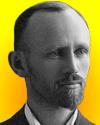
Born 9 Dec 1864; died 8 Aug 1957 at age 92.
Frederick George Novy was an American bacteriologist who learned the fundamentals of his field of research first hand in the laboratories of Louis Pasteur and Robert Koch in Europe. On his return to the University of Michigan, Ann Arbor, he taught a course in bacteriology (1889) often regarded as the first such formal university course in the U.S. In 1900 he served on a commission to determine if bubonic plague was becoming endemic in San Fancisco’s Chinatown. He was a co-founder of the Society of American Bacteriologists (1900). In his subsequent work in microbiology, for which he invented ingenious apparatus, he is best known for his study of trypanosomes, spirochetes and microbial respiration.«
Frederick George Novy was an American bacteriologist who learned the fundamentals of his field of research first hand in the laboratories of Louis Pasteur and Robert Koch in Europe. On his return to the University of Michigan, Ann Arbor, he taught a course in bacteriology (1889) often regarded as the first such formal university course in the U.S. In 1900 he served on a commission to determine if bubonic plague was becoming endemic in San Fancisco’s Chinatown. He was a co-founder of the Society of American Bacteriologists (1900). In his subsequent work in microbiology, for which he invented ingenious apparatus, he is best known for his study of trypanosomes, spirochetes and microbial respiration.«
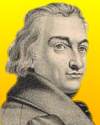
Born 9 Dec 1748; died 6 Nov 1822 at age 73.
French chemist who was the first to note that the completeness of chemical reactions depends in part upon the masses of the reacting substances (1803); he thus came close to formulating the law of mass action. Though he incorrectly concluded that elements unite in all proportions, his resulting controversy with the chemist Joseph-Louis Proust led to the establishment of the law of definite proportions. He continued Carl Scheele's research on chlorine, showing in 1785 how it could be used for bleaching. He continued Joseph Priestley's investigation of ammonia, and was the first to show it was a compound of hydrogen and nitrogen. He discovered potassium chlorate.
French chemist who was the first to note that the completeness of chemical reactions depends in part upon the masses of the reacting substances (1803); he thus came close to formulating the law of mass action. Though he incorrectly concluded that elements unite in all proportions, his resulting controversy with the chemist Joseph-Louis Proust led to the establishment of the law of definite proportions. He continued Carl Scheele's research on chlorine, showing in 1785 how it could be used for bleaching. He continued Joseph Priestley's investigation of ammonia, and was the first to show it was a compound of hydrogen and nitrogen. He discovered potassium chlorate.
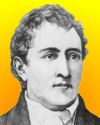
Born 9 Dec 1742; died 21 May 1786 at age 43. quotes
(also Karl) Swedish chemist who discovered oxygen in 1772. Scheele, a keen experimenter, worked in difficult and often hazardous conditions. In his only book, Chemical Observations and Experiments on Air and Fire (1777), he stated that the atmosphere is composed of two gases, one supporting combustion, which he named "fire air" (oxygen), and the other preventing it, which he named "vitiated air" (nitrogen). Due to delay in his publication, he lost priority to Priestley's discovery of oxygen in 1774. Scheele discovered many substances, such as chlorine (1774), manganese (1774), tungsten (1781), molybdenum (1782), glycerol, hydrocyanic (prussic) acid, citric acid, hydrogen sulphide and hydrogen fluoride. He also discovered a process resembling pasteurization.
(also Karl) Swedish chemist who discovered oxygen in 1772. Scheele, a keen experimenter, worked in difficult and often hazardous conditions. In his only book, Chemical Observations and Experiments on Air and Fire (1777), he stated that the atmosphere is composed of two gases, one supporting combustion, which he named "fire air" (oxygen), and the other preventing it, which he named "vitiated air" (nitrogen). Due to delay in his publication, he lost priority to Priestley's discovery of oxygen in 1774. Scheele discovered many substances, such as chlorine (1774), manganese (1774), tungsten (1781), molybdenum (1782), glycerol, hydrocyanic (prussic) acid, citric acid, hydrogen sulphide and hydrogen fluoride. He also discovered a process resembling pasteurization.
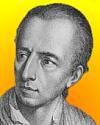
Born 9 Dec 1717; died 8 Jun 1768 at age 50.
Johann Joachim Winckelmann was a German archaeologist and art historian who is regarded as the father of modern archaeology because of his observations of the excavations of Pompeii and Herculaneum in Italy (made during three visits). The excavations, started in 1748, were carried out secretly to find art objects. Many artefacts and wall paintings were removed for the private collection of the Bourbon king Charles III (reigned 1759-88). Winckelmann protested the despoiling. He produced scholarly studies of archaeology and anquities and redefined archeology as a history of ancient art. For these, he is often credited with being the first modern art historian. He was murdered in Trieste by a former-convict cook while robbing him.
Johann Joachim Winckelmann was a German archaeologist and art historian who is regarded as the father of modern archaeology because of his observations of the excavations of Pompeii and Herculaneum in Italy (made during three visits). The excavations, started in 1748, were carried out secretly to find art objects. Many artefacts and wall paintings were removed for the private collection of the Bourbon king Charles III (reigned 1759-88). Winckelmann protested the despoiling. He produced scholarly studies of archaeology and anquities and redefined archeology as a history of ancient art. For these, he is often credited with being the first modern art historian. He was murdered in Trieste by a former-convict cook while robbing him.
Born 9 Dec 1703; died 17 Mar 1771 at age 67.
English jurist and mathematician who invented the achromatic lens, which he utilized in building the first refracting telescope free from chromatic aberration (colour distortion).
English jurist and mathematician who invented the achromatic lens, which he utilized in building the first refracting telescope free from chromatic aberration (colour distortion).
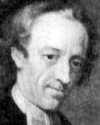
Born 9 Dec 1667; died 22 Aug 1752 at age 84. quotes
English priest and mathematician who sought to harmonize religion and science, and who is remembered for reviving in England the heretical views of Arianism. He attended Newton's lectures while at Cambridge and showed great promise in mathematics. Ordained in 1693. While chaplain to the bishop of Norwich (1694-98), he wrote A New Theory of the Earth (1696), in which he claimed that the biblical stories of the creation, flood and final conflagration could be explained scientifically as descriptions of events with historical bases. The Flood, he believed, was caused by a comet passing close to the Earth on 28 Nov 2349 BC. This put stress on the Earth's crust, causing it to crack and allow the water to escape and flood the Earth. After serving as vicar of Lowestoft (1698–1701), he returned to his alma mater, Cambridge University to become assistant to the mathematician Sir Isaac Newton, whom he succeeded as professor in 1703.
English priest and mathematician who sought to harmonize religion and science, and who is remembered for reviving in England the heretical views of Arianism. He attended Newton's lectures while at Cambridge and showed great promise in mathematics. Ordained in 1693. While chaplain to the bishop of Norwich (1694-98), he wrote A New Theory of the Earth (1696), in which he claimed that the biblical stories of the creation, flood and final conflagration could be explained scientifically as descriptions of events with historical bases. The Flood, he believed, was caused by a comet passing close to the Earth on 28 Nov 2349 BC. This put stress on the Earth's crust, causing it to crack and allow the water to escape and flood the Earth. After serving as vicar of Lowestoft (1698–1701), he returned to his alma mater, Cambridge University to become assistant to the mathematician Sir Isaac Newton, whom he succeeded as professor in 1703.
William Whiston: Honest Newtonian, by James E. Force. - book suggestion.
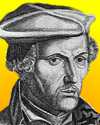
Born 9 Dec 1508; died 25 May 1555 at age 46.
Dutch geographer who was born Regnier Gemma, but following the convention of his times, added a Latin name when he became a scholar. He chose Frisius after his native Friesland province. He worked in the fields of cosmology, astronomy and mathematics. His first publication (1529) was a corrected version of Apianus' Cosmographia (1524). Gemma Frisius also applied his knowledge to catography, construction of globes, and making astronomical instruments. He introduced the principle of triangulation of observed places to accurately locate them on a map (1533). With similar trigonometric methods, he identified that comets exhibited a “proper motion” against the fixed star background. He was also the first to explain how measurement of longitude could be made from elapsed time measurements with a portable timepiece.«
Dutch geographer who was born Regnier Gemma, but following the convention of his times, added a Latin name when he became a scholar. He chose Frisius after his native Friesland province. He worked in the fields of cosmology, astronomy and mathematics. His first publication (1529) was a corrected version of Apianus' Cosmographia (1524). Gemma Frisius also applied his knowledge to catography, construction of globes, and making astronomical instruments. He introduced the principle of triangulation of observed places to accurately locate them on a map (1533). With similar trigonometric methods, he identified that comets exhibited a “proper motion” against the fixed star background. He was also the first to explain how measurement of longitude could be made from elapsed time measurements with a portable timepiece.«
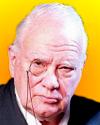
Died 9 Dec 2012 at age 89 (born 4 Mar 1923).
Patrick (Alfred Caldwell) Moore, English amateur astronomer, writer and broadcaster. He was educated at home due to childhood illness, from which time he acquired his interest in observational astronomy. Moore is best known as the enthusiastic and knowledgeable presenter of the BBC TV programme The Sky at Night, which he began in 1957. With a half-century of broadcasts, this is the world's longest-running television series, and it remains so with the original presenter. Moore has written over 60 books, including The Amateur Astronomer (1970), The A-Z of Astronomy (1986), and Mission to the Planets (1990). As an accomplished xylophone player, his interest in astronomy also shows in the title of one of his musical compositions: Perseus and Andromeda (1975).«
Patrick (Alfred Caldwell) Moore, English amateur astronomer, writer and broadcaster. He was educated at home due to childhood illness, from which time he acquired his interest in observational astronomy. Moore is best known as the enthusiastic and knowledgeable presenter of the BBC TV programme The Sky at Night, which he began in 1957. With a half-century of broadcasts, this is the world's longest-running television series, and it remains so with the original presenter. Moore has written over 60 books, including The Amateur Astronomer (1970), The A-Z of Astronomy (1986), and Mission to the Planets (1990). As an accomplished xylophone player, his interest in astronomy also shows in the title of one of his musical compositions: Perseus and Andromeda (1975).«
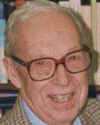
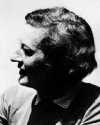
Died 9 Dec 1996 at age 83 (born 6 Feb 1913). quotes
English archaeologist and paleoanthropologist (née Nicol) who made several of the most important fossil finds subsequently interpreted and publicized by her husband, the noted anthropologist Louis Leakey. For every vivid claim made by Louis about the origins of man, the supporting evidence tended to come from Mary's scrupulous scientific approach. As “the woman who found our ancestors”, Mary's work in East Africa shed new light on human evolution. After Louis' death in 1972, she enjoyed her most spectacular find: three trails of fossilised hominid footprints 3.6 million years old, which she discovered at Laetoli in Tanzania (1978-9) showing man's ancestors were walking upright at a much earlier period than previously believed.
English archaeologist and paleoanthropologist (née Nicol) who made several of the most important fossil finds subsequently interpreted and publicized by her husband, the noted anthropologist Louis Leakey. For every vivid claim made by Louis about the origins of man, the supporting evidence tended to come from Mary's scrupulous scientific approach. As “the woman who found our ancestors”, Mary's work in East Africa shed new light on human evolution. After Louis' death in 1972, she enjoyed her most spectacular find: three trails of fossilised hominid footprints 3.6 million years old, which she discovered at Laetoli in Tanzania (1978-9) showing man's ancestors were walking upright at a much earlier period than previously believed.
Ancestral Passions: The Leakey Family and the Quest for Humankind's Beginnings, by Virginia Morell. - book suggestion.
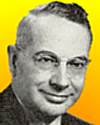
Died 9 Dec 1974 at age 65 (born 19 Aug 1909).
American physicist and biophysicist who brought atomic isotopes into the battle against cancer. During WW II, he developed a radio proximity fuse and later was a health-physics scientist with "Manhattan Project." Hoffman studied nine accident victims of radiation disease at Los Alamos in Aug 1945 and May 1946. This research revealed for the first time that atoms of living human tissue could be transformed into radioactive atoms. He recognized "a completely new approach to studying the metabolism of atoms in living tissue and a new way of probing the complicated system of gene cells that determine heredity," and such knowledge was indispensable to understanding the mysteries of cancer research in which he engaged for the rest of his life.«
American physicist and biophysicist who brought atomic isotopes into the battle against cancer. During WW II, he developed a radio proximity fuse and later was a health-physics scientist with "Manhattan Project." Hoffman studied nine accident victims of radiation disease at Los Alamos in Aug 1945 and May 1946. This research revealed for the first time that atoms of living human tissue could be transformed into radioactive atoms. He recognized "a completely new approach to studying the metabolism of atoms in living tissue and a new way of probing the complicated system of gene cells that determine heredity," and such knowledge was indispensable to understanding the mysteries of cancer research in which he engaged for the rest of his life.«
The life and death of cells, by Joseph G Hoffman. - book suggestion.
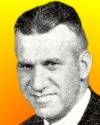
Died 9 Dec 1940 at age 46 (born 20 Sep 1894).
Gladwyn Kingsley Noble was an American biologist and zoologist. After WW I, he began his life's work at the American Museum of Natural History, specializing in herpetology (the study of reptiles and amphibians) and experimental biology investigations using techniques of endocrinology and neurology. In an article published in Nature on 7 Aug 1926, Noble debunked Paul Kammerer's claim that he had induced nuptial pads on midwife toads that were hereditary. After Noble examined a preserved specimen, he revealed the pad was simulated with injected Indian ink. This set off an academic bombshell. He died at the very height of his ability, at age 47, from a streptococcus infection of the throat.
Gladwyn Kingsley Noble was an American biologist and zoologist. After WW I, he began his life's work at the American Museum of Natural History, specializing in herpetology (the study of reptiles and amphibians) and experimental biology investigations using techniques of endocrinology and neurology. In an article published in Nature on 7 Aug 1926, Noble debunked Paul Kammerer's claim that he had induced nuptial pads on midwife toads that were hereditary. After Noble examined a preserved specimen, he revealed the pad was simulated with injected Indian ink. This set off an academic bombshell. He died at the very height of his ability, at age 47, from a streptococcus infection of the throat.
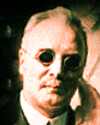
Died 9 Dec 1937 at age 68 (born 30 Nov 1869).
Swedish engineer who won the Nobel Prize for Physics in 1912 for his invention of the automatic sun valve, or Solventil, which regulates a gaslight source by the action of sunlight, turning it off at dawn and on at dusk or at other periods of darkness. It rapidly came into worldwide use for buoys and unmanned lighthouses. While recovering from an accident, convalescing at home, he noticed how much time his wife spent caring for their wood-burning stove. He decided to invent a more efficient and cost-effective stove. In 1922, Dalen's Amalgamated Gas Accumulator Co. patented his design and put the first AGA stoves into production. These stoves produced a radiant heat that kept the kitchen warm. The AGA remains popular today.
Swedish engineer who won the Nobel Prize for Physics in 1912 for his invention of the automatic sun valve, or Solventil, which regulates a gaslight source by the action of sunlight, turning it off at dawn and on at dusk or at other periods of darkness. It rapidly came into worldwide use for buoys and unmanned lighthouses. While recovering from an accident, convalescing at home, he noticed how much time his wife spent caring for their wood-burning stove. He decided to invent a more efficient and cost-effective stove. In 1922, Dalen's Amalgamated Gas Accumulator Co. patented his design and put the first AGA stoves into production. These stoves produced a radiant heat that kept the kitchen warm. The AGA remains popular today.
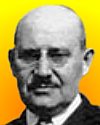
Died 9 Dec 1935 at age 63 (born 5 Feb 1872).
American biochemist whose discoveries concerning the value of vitamins and proteins helped establish modern concepts of nutrition. Collaborating with Thomas Osborne, together they published more than 100 papers on various aspects of nutrition (1909-28). In 1913, they showed that rats developed xerophthalmia on diets in which lard supplied the fat. The condition was cured by substitution of butterfat. Thus, they discovered butterfat contained a growth- promoting factor necessary for development, soon known as fat-soluble vitamin A, (co-discovered simultaneously by Elmer McCollum). Mendel also contributed to discovery of B complex vitamins (1915) and linked the nutritive value of proteins to their amino acids.
American biochemist whose discoveries concerning the value of vitamins and proteins helped establish modern concepts of nutrition. Collaborating with Thomas Osborne, together they published more than 100 papers on various aspects of nutrition (1909-28). In 1913, they showed that rats developed xerophthalmia on diets in which lard supplied the fat. The condition was cured by substitution of butterfat. Thus, they discovered butterfat contained a growth- promoting factor necessary for development, soon known as fat-soluble vitamin A, (co-discovered simultaneously by Elmer McCollum). Mendel also contributed to discovery of B complex vitamins (1915) and linked the nutritive value of proteins to their amino acids.
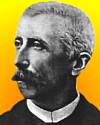
Died 9 Dec 1916 at age 76 (born 18 Dec 1839). quotes
French psychologist who pioneered in experimental psychology and conducted influential psychpathological studies. His endeavour to account for memory loss as a symptom of progressive brain disease was published in his Les Maladies de la mémoire (1881; Diseases of Memory), constitutes the most influential early attempt to analyze abnormalities of memory in terms of physiology. Ribot was instrumental in introducing dynamic psychology in France. In 1885 Ribot was appointed to teach the first course in experimental psychology offered by the Sorbonne, at the University of Paris.
French psychologist who pioneered in experimental psychology and conducted influential psychpathological studies. His endeavour to account for memory loss as a symptom of progressive brain disease was published in his Les Maladies de la mémoire (1881; Diseases of Memory), constitutes the most influential early attempt to analyze abnormalities of memory in terms of physiology. Ribot was instrumental in introducing dynamic psychology in France. In 1885 Ribot was appointed to teach the first course in experimental psychology offered by the Sorbonne, at the University of Paris.
Died 9 Dec 1883 at age 46 (born 17 Jan 1837).
French Assyriologist and numismatist who recognized, from cuneiform inscriptions, a language now known as Akkadian that proved valuable to the understanding of Mesopotamian civilization 3,000 years before the Christian era. He published his first archaeological paper at 14 and went on to become a scholar of wide achievement.
French Assyriologist and numismatist who recognized, from cuneiform inscriptions, a language now known as Akkadian that proved valuable to the understanding of Mesopotamian civilization 3,000 years before the Christian era. He published his first archaeological paper at 14 and went on to become a scholar of wide achievement.
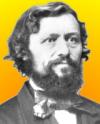
Died 9 Dec 1881 at age 60 (born 10 Jul 1821).
German bridge and railway engineer whose graphic methods of structural analysis have been widely applied to engineering and mechanics. He wrote the first book on graphic statics, published in 1866. Stress trajectories are one of the original topics presented in this book. In 1849-1850, Culmann spent two years traveling in England and the United States to study bridges, which he later wrote about in Germany. He designed numerous bridge structures at the newly organized Zürich Polytechnicum. The works of Culmann, among other things, have been taken up for the design of the central arched bridges of the Eiffel Tower, and were also quoted by Pier Luigi Nervi in his patent on the construction of reinforced concrete-slab floors.
German bridge and railway engineer whose graphic methods of structural analysis have been widely applied to engineering and mechanics. He wrote the first book on graphic statics, published in 1866. Stress trajectories are one of the original topics presented in this book. In 1849-1850, Culmann spent two years traveling in England and the United States to study bridges, which he later wrote about in Germany. He designed numerous bridge structures at the newly organized Zürich Polytechnicum. The works of Culmann, among other things, have been taken up for the design of the central arched bridges of the Eiffel Tower, and were also quoted by Pier Luigi Nervi in his patent on the construction of reinforced concrete-slab floors.
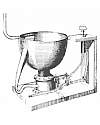
1778
Died 9 Dec 1814 at age 66 (born 13 Apr 1748). quotes
English engineer and inventor whose lock manufacturing shop was the cradle of the British machine-tool industry. Central in early Victorian lockmaking and manufacturing, he influenced almost every mechanical trade of the time. Like Henry Ford, his influence was probably greater for the manufacturing processes he developed, than the product itself. He took out his first patent on a safety lock (1784) and in 1795 he patented his hydraulic press, known as the Bramah press, used for heavy forging. He devised a numerical printing machine for bank notes and was one of the first to suggest the practicability of screw propellers and of hydraulic transmission. He invented milling and planing machines and other machine tools, a beer-engine (1797), and a water-closet.[left]
English engineer and inventor whose lock manufacturing shop was the cradle of the British machine-tool industry. Central in early Victorian lockmaking and manufacturing, he influenced almost every mechanical trade of the time. Like Henry Ford, his influence was probably greater for the manufacturing processes he developed, than the product itself. He took out his first patent on a safety lock (1784) and in 1795 he patented his hydraulic press, known as the Bramah press, used for heavy forging. He devised a numerical printing machine for bank notes and was one of the first to suggest the practicability of screw propellers and of hydraulic transmission. He invented milling and planing machines and other machine tools, a beer-engine (1797), and a water-closet.[left]
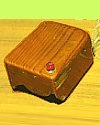
In 1968, the first demonstration of the use of a computer mouse was given at the American Federation of Information Processing Societies' Fall Joint Computer Conference at Stanford University, California. The mouse's inventor, Doug Engelbart and a small team of researchers from the Stanford Research Institute stunned the computing world with an extraordinary demonstration at a San Francisco computer conference. They debuted the computer mouse, graphical user interface, display editing and integrated text and graphics, hyper-documents, and two-way video-conferencing with shared workspaces. These concepts and technologies were to become the cornerstones of modern interactive computing. Engelbart patented the mouse on 17 Nov 1970.

In 1960, the first electronic computer to employ thin-film memory was announced when Sperry Rand Corporation, of St. Paul, Minn., unveiled a new computer, known as Univac 1107 [left]. Thin film magnetic memory technology was developed by Sperry Rand through government funded research. A thin film (4 millionths of an inch thick) of iron-nickel alloy was deposited on small glass plates. This provided very fast access times in the range of 0.67 microseconds, but was very expensive to produce. The Univac 1107, intended for the civilian marketplace, used thin film memory only for its 128-word general register stack. Military computers, where money was less of a concern, used larger amounts of thin film memory.
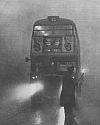
Flare-led bus
In 1952, after a dense four-day killer smog in London, England, sunshine was seen again as the fog was cleared by freshening winds and a rise in temperature. Since it began on 5 Feb 1952, it had caused at least 4,000 deaths and chaos for transportation as visibility was reduced to a few hundred yards. Although the London Underground had maintained service, bus service was vitually shut down whenever visibility was reduced so severely the roads became congested. During the time of dense fog, most flights in to London Airport were diverted to Hurn, near Bournemouth and linked by train with Waterloo. The many deaths were of mostly among the elderly, the very young, or those with medical problems. The cause of the smog was coal-burning. Drastic action was needed, resulting in the Clear Air Act of 1956.«
Killer Smog: The World's Worst Air Pollution Disaster, by William Wise. - book suggestion.
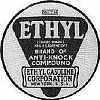
In 1921, tetraethyl lead was first given a laboratory test as an anti-knock additive to gasoline fuel. The knock in the one-cylinder laboratory engine was utterly silenced. Even at a strength of only 2-3g grams per gallon (1000 to 1 dilution), it had a remarkable ability to quiet the relentless knocking. This invention of Thomas Midgley, Jr., of the General Motors Research Laboratories, located in Dayton, Ohio, was first put on public sale as ethyl gasoline in the same city on 2 Feb 1923. This invention of leaded gasoline came after seven years of testing at least 33,000 compounds. Previously, on hard acceleration, an engine sometimes made knocking, popping or crackling sounds, which sapped power and could damage the engine.
From the Periodic Table to Production: The Life of Thomas Midgley, Jr., by Thomas Midgley. - book suggestion.
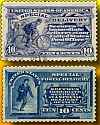
In 1902, the first U.S. stamp to show a bicycle in its design was issued. This blue 10-cent Special Delivery "Messenger on Bicycle" stamp showed in a small way how technology was coming in America's future, because it replaced earlier issues of a design showing a "running" messenger. When the special delivery service was initiated with its own 10-cent stamp the earliest known use of that stamp was on 6 Sep 1888 (which is used to date the stamp as in earlier times there was no formal day-of-issue.) A few varieties of the same running messenger were issued in the years prior to the 1902 Messenger on Bicycle stamp.«
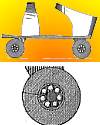
In 1884, the first U.S. patent for ball-bearing roller skates was issued to Levant M. Richardson of the Richardson Skate Company, Chicago, Illinois. This design allowed until then unseen speed. (No. 308,990)
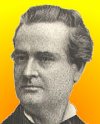
In 1845, J. Marion Sims (1813-83) began his experiments (1845-50) to use a fine silver wire for sutures. In his era, the suture materials used for vaginal tears, mostly silk and catgut, absorbed bodily fluid, caused inflammation around the wounds, promoting horrible infections that would never heal. So he used a fine silver wire he had drawn by a jeweller. Sims successfully performed a vesico-vaginal fistula operation on 21 Jun 1849 in Montgomery, Ala. The suture was removed on the eight day after the operation. He reported his technique in an article "On the Treatment of Vesico-vaginal Fistula" in the American Journal of the Medical Sciences. For his development of techniques and instruments, Sims is known as the "Father of Modern American Gynecology."
In 1582, this date, 9 Dec 1582, was the last using the Julian calendar in France. Tomorrow will be 20 Dec 1582 on the Gregorian calendar introduced by Pope Gregoy XIII. In Italy, the change had already taken place two months earlier, having ended use of the Julian calendar on 4 Oct 1582. Some regions that are part of present-day France, but acted independently then, continued using the Julian calendar. The last day of the Julian calendar for these were Alsace: 5 Feb 1682; Lorraine: 16 Feb 1670; Strasbourg: Feb 1682. However, after the French Revolution, the Republican calendar, with twelve months of 30 days each plus five supplementary days (six in a leap year) was adopted on 24 Nov 1793, and not abolished until 31 Dec 1805. The Gregorian calendar was followed from 1 Dec 1806.«




